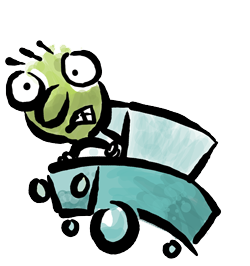Animals have a skeleton.
We know this because if we x-ray an animal, we can quite clearly see the skeleton.
And we fail to realise that articles have a skeleton too—and they're called sub-heads.
But unlike animals, the sub-head skeleton doesn't show up from the very start.
Instead you'll find it shows up later. A lot later
Which is why a writer may make the mistake of trying to write sub-heads first. And that writer may do so because he can find the article skeleton in minutes—just by looking at the sub-heads.
At which point a thought enters his mind.
He thinks it's a good idea to write the sub-heads before writing the article—at the outlining stage. And of course, he'd be wrong. Terribly wrong.
Because the sub-heads aren't written.
Instead the sub-heads write themselves
So what do we mean “the sub-heads write themselves?” It's not very hard to implement, once you understand the concept. And to quickly get to the concept, let's write a whole lot of blah, blah.
And then add only the last sentence and the sub-head.
Here's an example:
Blah, blah, blah, blah, blah, blah and more blahdee blah, blahdoo, blah, blah, blah. Blah, blah, blah, blah, blah, blah and more blahdee blah, blahdoo, blah, blah, blah. Blah, blah, blah, blah, blah, blah and more blahdee blah, blahdoo, blah, blah, blah. Blah, blah, blah, blah, blah, blah and more blahdee blah, blahdoo, blah, blah, blah. And then what you need to do is simply add more water.
But why is water so very important?
Blah, blah, blah, blah, blah, blah and more blahdee blah, blahdoo, blah, blah, blah. Blah, blah, blah, blah, blah, blah and more blahdee blah, blahdoo, blah, blah, blah. Blah, blah, blah, blah, blah, blah and more blahdee blah, blahdoo, blah, blah, blah. Blah, blah, blah, blah, blah, blah and more blahdee blah, blahdoo, blah, blah, blah. Which is why people in Netherlands often cooked it using a pressure cooker?
So how can you use a pressure cooker effectively?
Blah, blah, blah, blah, blah, blah and more blahdee blah, blahdoo, blah, blah, blah. Blah, blah, blah, blah, blah, blah and more blahdee blah, blahdoo, blah, blah, blah. Blah, blah, blah, blah, blah, blah and more blahdee blah, blahdoo, blah, blah, blah. Blah, blah, blah, blah, blah, blah and more blahdee blah, blahdoo, blah, blah, blah. Blah, blah, blah, blah, blah, blah and more blahdee blah, blahdoo, blah, blah, blah. And what you end up with, is a a chocolate-like texture. But shouldn't berries have a rough, not smooth texture?
What you saw above was just random blah, blah and yet it all made perfect sense
But why did it make perfect sense? It's because the blah, blah, crazy as it is, is following a thread; a line of thought. And if you connect with the sub-head, and connect correctly, the line of thought seems to follow a pattern that we recognise as an article.
To get a great article, we don't need to write a list of fancy sub-heads
We simply need to take the following steps.
1) Outline the article.
2) Write the article and add the connectors as you jump from paragraph to paragraph.
3) When editing, if you find that paragraphs weren't connected, you simply connect them using connectors.
4) That leads to this wonderful spine of sub-heads.
But once you have those sub-heads in place, they're a great way to audit your article
Because the sub-heads behave like a guiding path, showing you exactly where the article is headed. You can often tell if the article is on track or veering off madly. And you can then use the sub-heads as a way to make sure your article is sharp and precise.
Of course there are exceptions to the sub-head rule
Some articles may not appear to have a set of sub-heads that flow into each other.
And yet the article is perfectly good. There are exceptions to every rule and once you understand the rules, it's fine to break it. But first, it's better to work with sub-heads.
And work with them as a secondary system of auditing your article—not your first.
Sub-heads don't show up when you first outline your article
But then as the article moves ahead, they appear—keeping your article together and helping you and the reader slide from start to finish.


Leave a Reply